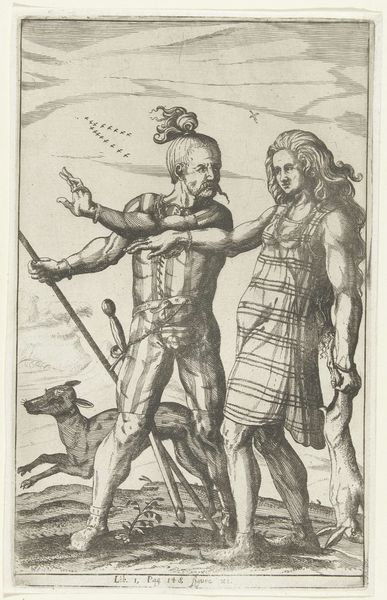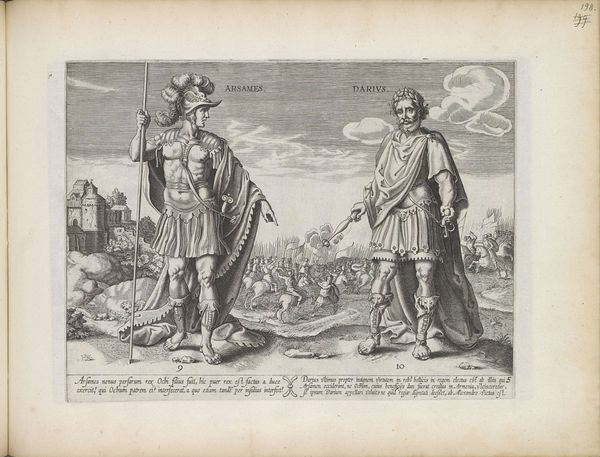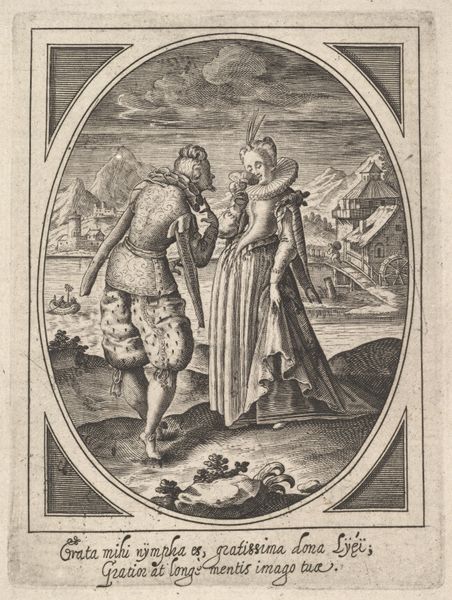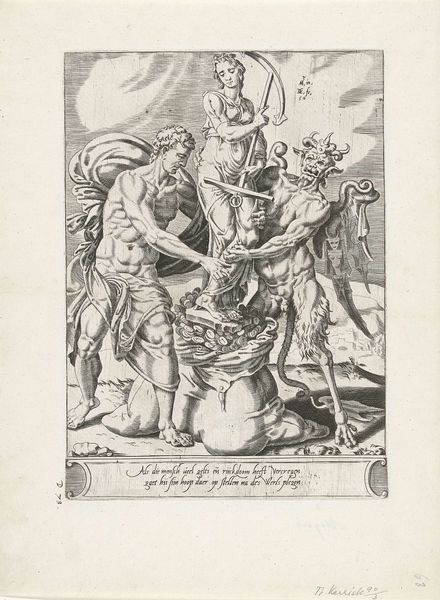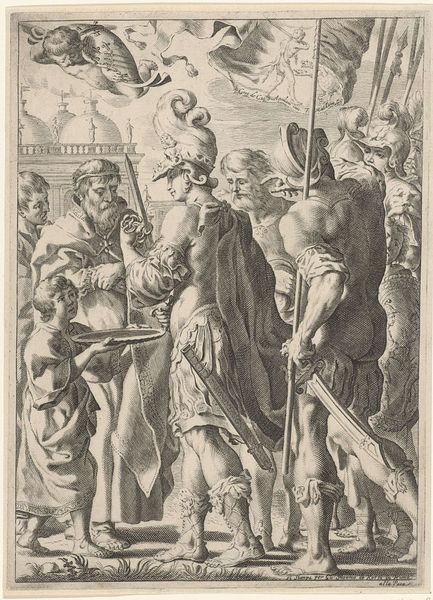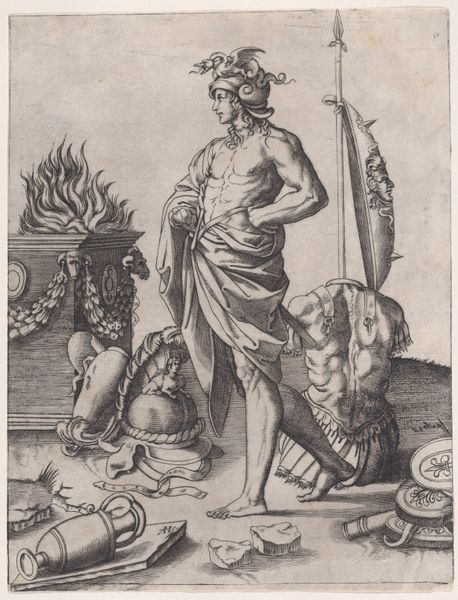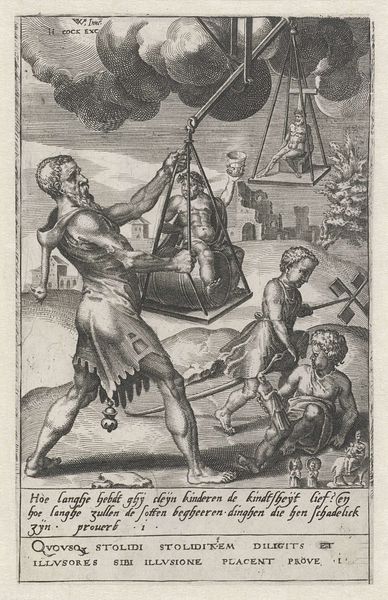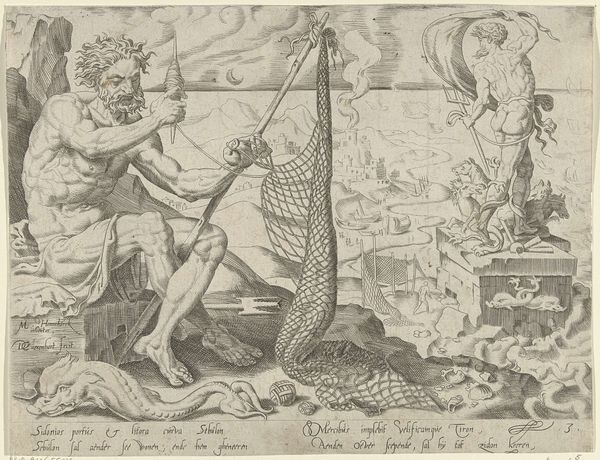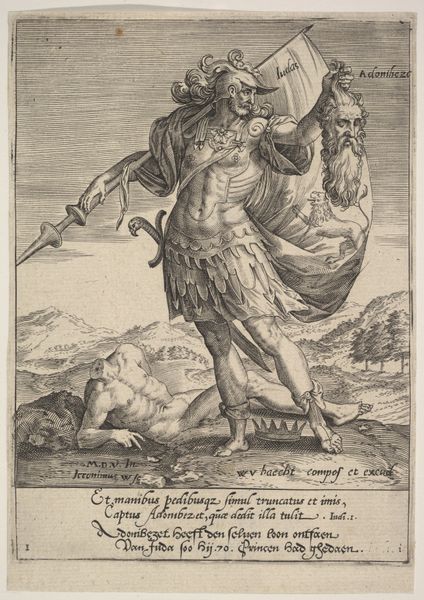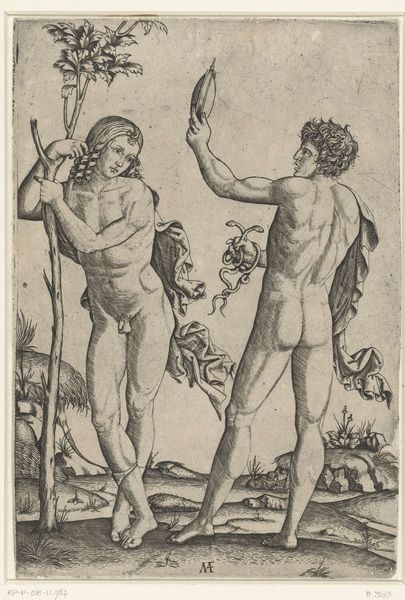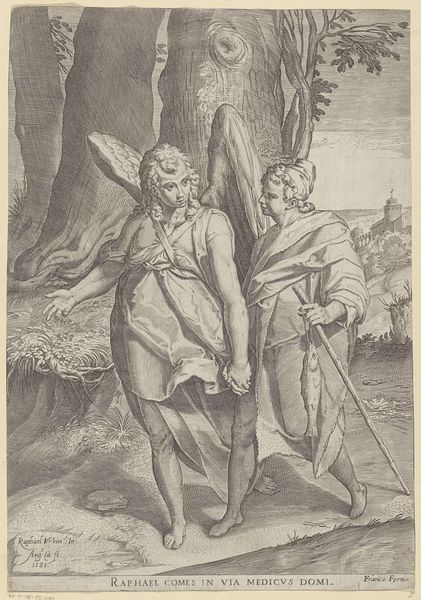
print, engraving
#
allegory
# print
#
landscape
#
classical-realism
#
mannerism
#
figuration
#
line
#
history-painting
#
engraving
#
realism
Dimensions: height 153 mm, width 113 mm
Copyright: Rijks Museum: Open Domain
Curator: This engraving, created in 1577 by Abraham de Bruyn, is entitled "Neptunus en Ceres" and is held at the Rijksmuseum. Editor: Immediately striking is the stark contrast achieved through the rigorous line work, a kind of shimmering effect across the forms of Neptune and Ceres. It feels very Mannerist. Curator: Absolutely. Consider that engravings like this were crucial for disseminating imagery, not just within artistic circles, but also for craftsmen. The level of detail would have been meticulously studied. De Bruyn likely relied on workshops specialized in producing these prints, requiring skilled labor and access to specialized tools. Editor: Focusing on the composition, we see these two powerful figures balanced in the foreground, dominating a somewhat diminutive landscape backdrop. Note the trident held by Neptune, the cornucopia overflowing with fruits and grains held by Ceres—clear visual markers. Curator: The landscape and the figures' accoutrements speak to power structures of the time. The work participates in allegorical traditions that enforced moralizing viewpoints during the 16th Century in Europe. The presence of Latin text grounds the piece within elite humanist circles, likely commissioning similar work, while shaping popular understandings of classical mythology. Editor: What’s fascinating to me is how the figures themselves are rendered. Neptune is so virile, almost overflowing with muscularity, and Ceres is a vision of bountiful femininity. Their placement echoes the common symbolic dichotomy that existed between masculinity and the active, and femininity and the passive. Curator: However, the print can be further understood within systems of trade. Engravings were highly coveted commodities bought and sold across Europe and its colonial peripheries. We cannot analyze these engravings without factoring in questions of cost, access, and distribution that dictated viewership and potential creative adaptations of printed source imagery, across varying workshop cultures, even reaching the American continent. Editor: True. Approaching it from a purely formal perspective, the rhythm created by the lines gives the work a palpable tension—a dynamic quality almost at odds with its symbolic rigidity. It invites close observation of the craftsmanship in bringing the figures and landscape to life. Curator: Considering the broader social and material contexts allows us a more complete understanding of its value beyond its immediate aesthetic qualities, moving from individual interpretation towards recognizing its historical significance. Editor: Yes, each viewpoint enriches our engagement with de Bruyn's "Neptunus en Ceres," deepening our comprehension.
Comments
No comments
Be the first to comment and join the conversation on the ultimate creative platform.
